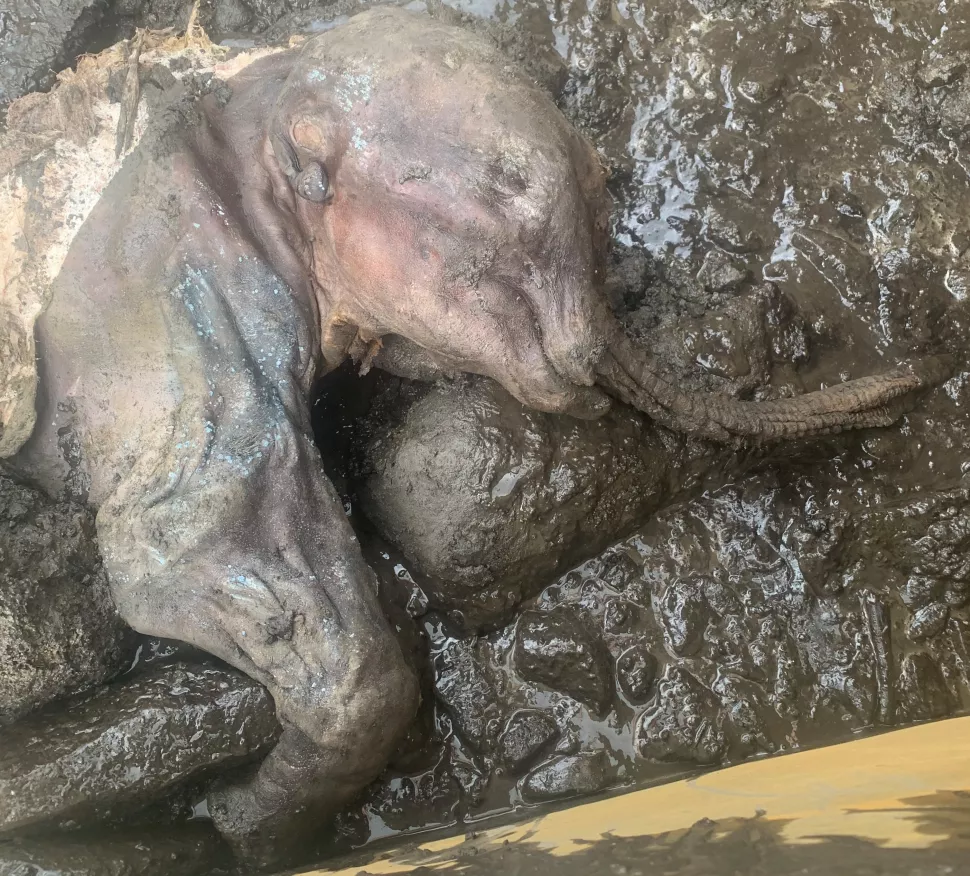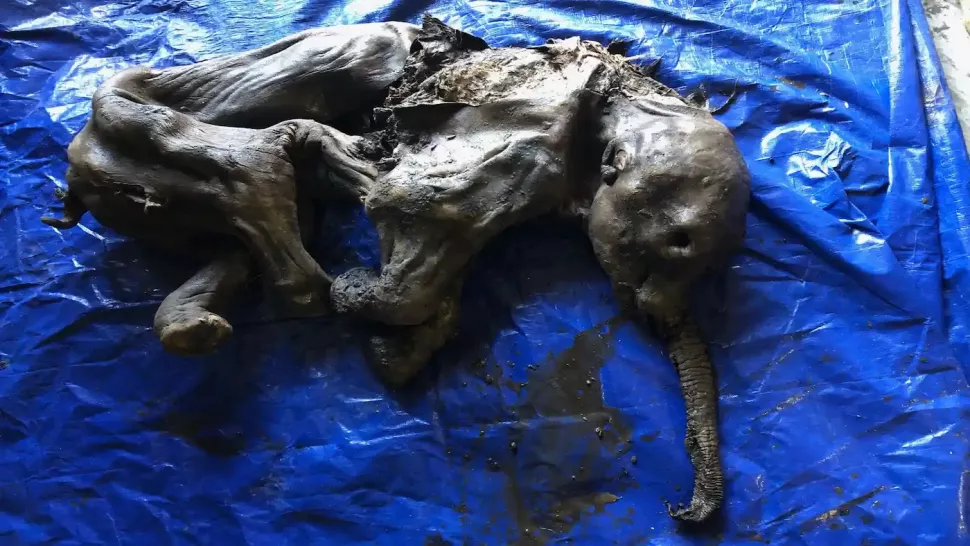Miners in Canada’s far north Yukon were digging for gold when they came across something much more valuable: the mummified remains of an almost-complete baby woolly mammoth. The preservation is simply staggering, with the extinct baby animal’s skin and hair still intact.

The mammoth calf is believed to be female (based on its morphology) and was around one month of age at the time of its death. She likely died during the last ice age, more than 30,000 years ago during a time when the Yukon’s plains were roamed by wild horses, cave lions, and giant steppe bison. Members of the local Tr’ondek Hwech’in First Nation named the calf Nun cho ga, which literally means “big baby animal”.
“As an ice age paleontologist, it has been one of my lifelong dreams to come face to face with a real woolly mammoth. That dream came true today,” Grant Zazula, a paleontologist for the Yukon government’s Department of Tourism and Culture, said in a statement. “Nun cho ga is beautiful and one of the most incredible mummified ice age animals ever discovered in the world. I am excited to get to know her more.”

Nun cho ga likely met her untimely death after getting stuck in the mud, becoming engulfed and suffocating. Not long after she died, the calf was completely buried. But the circumstances of her tragedy have proven to be incredibly helpful for science, resulting in the calf’s extraordinary mummification, aided by the chilly permafrost in the Klondike gold fields in the Yukon.
The story of how Nun cho ga was found is no less extraordinary. She was discovered by two gold miners performing digs near a creek south of Dawson City. One of them felt the front of his loader strike something out of the ordinary and upon the investigation, they were taken aback by the sight of a strange mummified creature, which they weren’t really sure what represented. The miners were wise enough to stop all digging operations and contacted local geologists who showed up at the location, quickly recovered the remains, and collected soil samples from the dig. One hour after the scientists left, a huge lightning storm erupted over the site, which would have completely destroyed the precious ice age if the team hadn’t come in the nick of time.
Professor Dan Shuar, an earth scientist at the University of Calgary, was among the researchers who participated in the mammoth’s recovery. He described the emotional discovery on Twitter.
This is only the second time that a near-complete mammoth calf was found, after the unearthing of another infant mammoth, known as Lyuba, was recovered in 2007 from Siberia’s thawing permafrost. The two infant mammoths were about the same size and age at their time of death. In 1948 another mammoth calf, called Effie, was found in Alaska, interesting by another group of gold miners, but the remains weren’t nearly as well preserved and complete as the former two.
Scientists hope that by studying Nun cho ga they may gain valuable insights into these remarkable animals, which went extinct around 5,000 years ago when the last individual died on Wrangel Island in the Arctic Ocean. Last year, leading scientists in the field of genetics launched Colossal, a bioscience startup on a mission to eventually breed a live mammoth hybrid, and data from the tissue of Nun cho ga could be instrumental to this aim.






